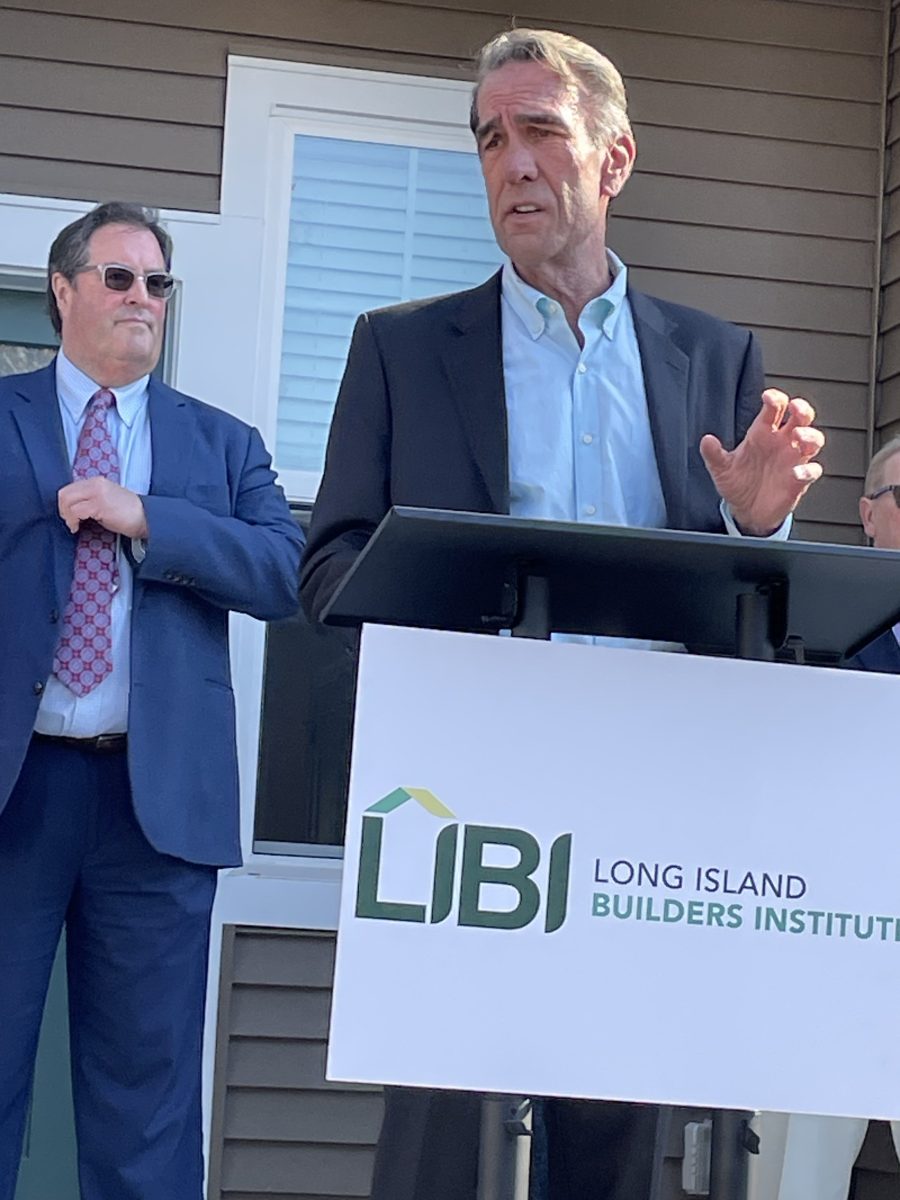The Long Island Builders Institute released a study for the first time quantifying the sector’s direct impact as $9.5 billion in earnings and at least 114,000 jobs, while calling for less red tape and more supportive legislation.
On Oct. 30, LI Builders Institute released a white paper indicating Long Island home construction’s 2023 direct, indirect, induced and total contributions, as well as a multiplier effect indicating it is directly responsible for $24.8 billion in annual sales.
The report found it supports nearly 200,00 jobs, almost $15.4 billion in earnings and $41.7 billion in sales.
The study, which also looked at obstacles such as zoning that makes multi-tenant or mixed-use housing difficult to build, found the sector linked to about 14% of Long Island jobs, 12% of employee earnings and 9% of total sales.
In the study by Camoin Associates, LI Builders Institute concluded employees associated with Long Island home building earn about $15.4 billion, spending about $11.5 billion on Long Island and resulting in about $122.6 million in sales taxes.
Sales taxes from the home building sector’s employee earnings about $138 million statewide.
“These numbers can become like Monopoly money,” said LI Builders Institute Vice President Anthony Bartone, managing partner at Farmingdale-based Terwilliger & Bartone Properties.” If you see it and feel it, everybody will start to warm up to it.”
The results were presented at the site of new construction in Farmingdale, which was credited with being more friendly to multi-tenant construction than many areas.
“It’s almost like we’re tooting our own horn,” Brian Ferruggiari, director of public affairs for West Islip-based AVR Reality, said of the industry’s efforts to stress the sector’s importance in the past. “Now we have a document to show the impact of this industry.”
LI Builders Institute Treasurer Johnathan Weiss, president of Jericho-based oB2K Development, said the industry employs land use attorneys, engineers, architects, tradespeople, landscapers, framers, plumbers and others. “You have the guy who shows up selling coffee, donuts and sandwiches,” he said.
Others cited the economic importance of this sector in a region where homes and real estate are typically a person’s biggest asset.
“I was awestruck,” said Bartone of seeing employees. “At lunchtime, it was like ants marching into downtown to have lunch—just the construction workers.”
Property taxes from new home construction result in nearly $13 million in Nassau and more than $9 million in Suffolk, while new apartment construction leads to about $776,000 in property taxes in Nassau and about $7.6 million in Suffolk.
Builders in the study indicated expensive land, insurance and a patchwork of zoning laws and varying municipal requirements lead to delays and drive up costs.
“The biggest impediment is probably zoning,” LI Builders Institute CEO Mike Florio said, noting about 85% of residential Long Island is zoned for single-family homes. “We don’t have rental.”
They cited issues such as delays in approvals and inspections and community opposition, as some said they were looking to do business off Long Island amid problems.
“Single-family homes are not going to cut it on Long Island anymore,” said Farmingdale Village Mayor Ralph Ekstrand. “We have to have multi-use buildings. You have to change your zoning. We’ve changed our zoning for Farmingdale.”
The study found that 91% of Long Island housing units are permanently occupied, while 9% are vacant. Meanwhile, 83% are single-family, while 6% are two-four units, with about 5% overall for seasonal use.
“We don’t have a diversity of housing stock,” Florio said. “You don’t have that lifestyle where someone in their 20s can rent a place, get married, have kids, then go to a single-family home.”
Weiss said the region needs more housing suitable for single people and those starting out. “Long Island is losing its young people,” he said.
Others said lack of construction is making it difficult for younger people to remain in the region. “We pay some of the highest school taxes in the world. Our schools are terrific, but we are not capitalizing on that investment,” Bartone said. “The next generation is leaving. They don’t have a place to live.”
About 42% of the industry’s workers on Long Island are ages 25-44, and 43% are age 45 to 64, including 17% female and 83% male.
The LI Builders Institute study found there are about 10,000 carpenters, 9,000 construction laborers and nearly 7,00 electricians.
Florio hopes these numbers will encourage legislators to pass laws that simplify and assist new construction.
“We want to encourage our elected leaders to avoid legislation that is going to be harmful to our industry,” Florio said. “The study is another argument in favor of what we’re doing, the huge economic benefit that it provides.”
Read more: Long Island construction booming, study finds
































